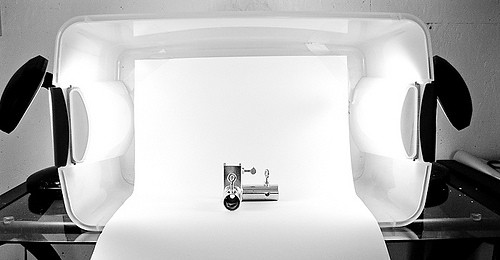Improve Your Photography With This Great Advice
The art of photography can be complicated and requires a certain degree of natural talent along with some additional training. Although you don’t have to be a natural-born photographer, you have to be interested in learning tips and tricks in order to be successful.
Move in closer to your subject to take a better picture. If you get closer to your subject you can frame it, and focus on it. If you are taking a portrait, getting closer allows you to notice facial expressions and other details. If your subject is far away, you are likely to miss the small important details.
In the scene before you, frame a select part of it to create a good composition. High quality pictures will highlight a particular feature of the subject in your photo. Do not try showing too much. If you are trying to capture an impression, take a couple of photographs instead of just one singe picture that has no detail or focus.
There are great photographers you can look to for inspiration. Looking at the work of other photographers will remind you that there are endless ways to capture a moment.
Shutter Speeds
Take a tip here to enhance your photographs! Shutter speeds can make the difference between a good and bad photo, so learn more about them. You should see letters on your camera: P, M, A and S. The P is an initial for the program mode. The P is the automatic setting. Choose this to let the camera decide on the aperture speeds and shutter speeds. When you don’t know which setting to use, the “P” setting will help you capture a great shot.
Try to adjust your camera so that the background has a bit of a blur to it when people are the subjects of your photos. When your background is not blurred, it will take the attention from your subject, and you will have a harder time making the viewer focus on what you want. The easiest way to be sure the background is out of focus is to set your subjects well in front of the background.
Ensure you have an extra charged battery so you do not miss the greatest photos. You should always load your digital camera with fully-charged batteries, because it can be a real energy hog, especially when you use the LCD screen. Since you’ll be taking a lot of pictures, you should probably bring a back-up set of batteries, too.
Take pictures of people. Do not take photographs of people without their consent. Shots of people will stand out and help you remember great traveling experiences. Try to catch people that are just ordinary.
Memory Card
An essential element of taking great photographs is taking a large amount of them; make sure you have a substantial memory card to store them all. A big memory card will allow you to hold a lot more pictures. A spacious memory card will also enable you to shoot in RAW, presenting more opportunities for editing in the post production phase.
Play around with alternate approaches to expressions, perspectives and scale. An ordinary object can be transformed to art if the setting distorts its actual size, or lends a silly or unique perpective. Practice altering your composition in order to see familiar objects in a new way.
Shoot quickly when you are taking photos. You will not know if that opportunity will ever present itself to you again, so get the shot! Some special moments are only available to photograph for a few seconds and then they are lost forever. Do not attempt getting every single setting on your camera just perfect, because you will put yourself at risk of losing the shot that you want.
When composing a shot, think about framing. This refers not to a physical frame around a printed photo, but to a “natural” frame sought out in the camera’s field of view. If you look hard enough when trying to take a picture, you can use neighboring elements to create “natural frames” for your subject matter. You can practice composing a great picture in this manner.
Make sure your subject is in focus and at the center of your picture. Good camera focus is essential for good composition and perspective. The main thing to focus on starting out is centering your subject and being certain you are including the entire subject in the picture. Don’t worry about the background.
Proper knowledge of how to adjust the ISO setting of your camera is essential to getting great shots. Remember that the higher you turn the ISO, the more you can see, and thus print, grain on your photo. If this is not an effect you are consciously aiming for, visible grain can make your photo look awful.
The information in this article can guide you to master photography and have a successful career. Taking photos requires creativity and is not just picking up the camera and pressing the shutter button. Photography is about taking the artistic beauty that is present all around you and having it immortalized forever.

Comments are closed.